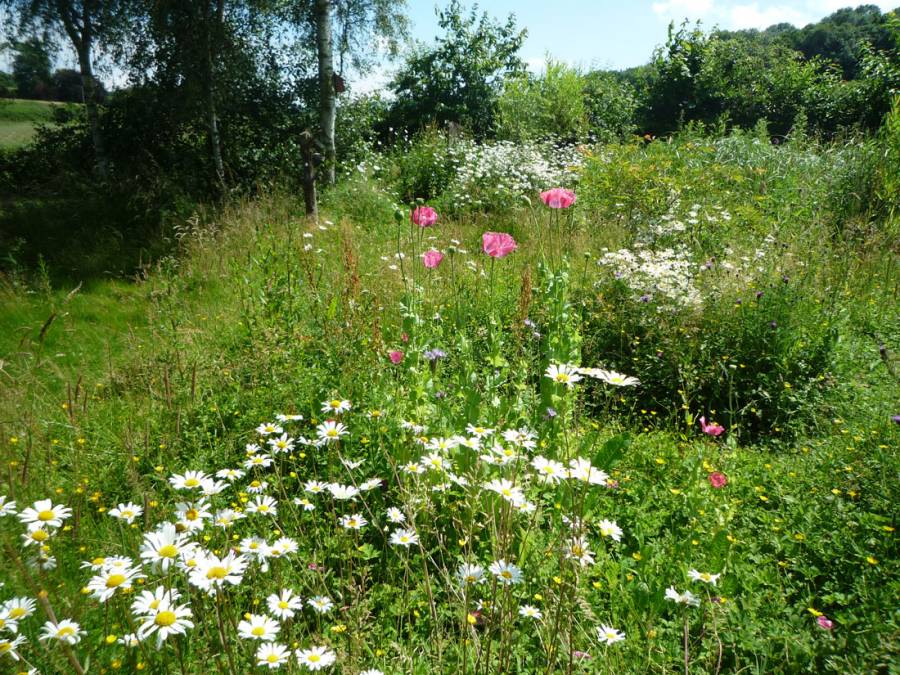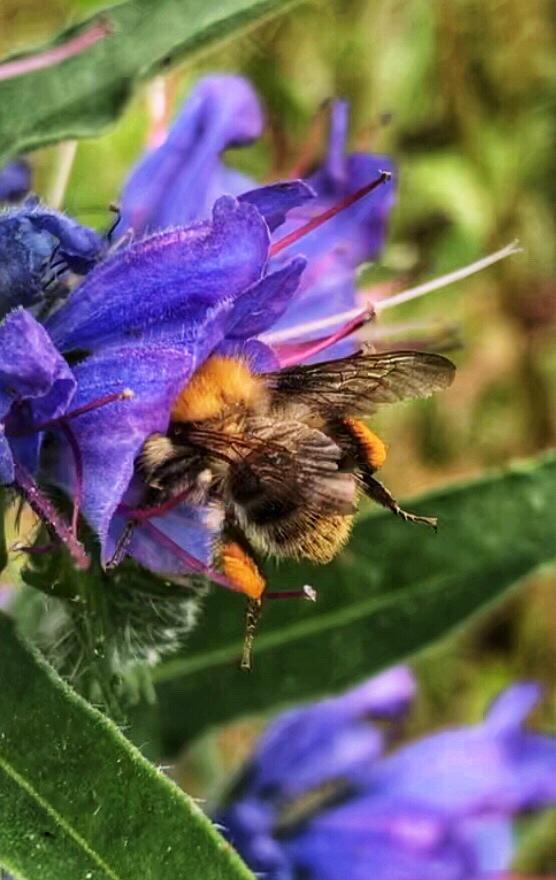From honeybees to beautiful birds, it’s easy to make changes to your garden to create a DIY wildlife sanctuary.
Wildlife plays a vital role in securing a healthy environment, whether it’s insects, birds, or mammals. With more humans encroaching on the planet than ever before, it’s so important now to make sure that each one of us does our part to preserve the wildlife in our environment and our communities. A healthy wildlife population ensures healthier plants, cleaner air, and a better balance in nature overall. If you appreciate nature and want to encourage more wildlife activity in your own garden, there are several things you can do to attract animals and insects alike. Read on for some helpful tips you can use to preserve and promote healthy wildlife right where you live.
The Benefits of Creating Your Own Wildlife Sanctuary
Spending time outdoors can make you feel at ease, reduce stress, and give you time to clear your mind. When you create your own wildlife sanctuary, you’ll also get to enjoy the sights and sounds of Mother Nature in your own garden. From singing birds to buzzing bees and scampering squirrels, wildlife is fun to watch and also brings about feelings of harmony and calm. By making a few changes to your garden, you can become a part of the nature that surrounds you. You’ll also feel good knowing that you’re contributing to a healthy environment while encouraging pollinators, birds, and other creatures to thrive.
Creating a DIY wildlife sanctuary in your is also a wonderful way to educate your children. This hands-on learning experience will spark the imagination and encourage your children to want to learn more about science, animals, and the environment as a whole. As you bring in more plants and flowers, you’re also contributing to cleaner air and a better world.
DIY Wildlife Sanctuary: How to Attract Wildlife
No matter where you live or the size of your garden, it’s easy to attract specific species to your sanctuary. Remember to be patient when attempting to introduce new insects and animals. It takes a little bit of patience and ingenuity, but eventually, your backyard will start to buzz with the activity of new creatures making it their home.
Bees
Bees are some of the world’s most important pollinators, so it’s always good to encourage them to thrive. Plant a few native wildflowers and other attractants that will lure bees to your garden or landscape. Look for flowers that will thrive in your specific region and plant them in the garden to attract bees and promote healthy pollination.
- Bee Fountain: A bee fountain (or bee bath) is a wonderful way to encourage bees to thrive in your garden. This small fountain provides water to bees to keep them cool, feed their babies, dilute honey, and aid with healthy digestion. Take a shallow dish and place it on top of an inverted pot. Place river rocks at the bottom so the bees won’t drown, then fill it with fresh water somewhere in your garden.
- Bee Hotel: This “insect hotel” is designed to attract solitary bees so they have a place to lay their eggs. Bee hotels include several cavities or holes all placed inside a single structure. You can make a bee hotel yourself using a wooden frame with hollow stems or empty bamboo canes placed inside These bee hotels are also available at many garden stores.
Squirrels
With their fluffy tails and charming mannerisms, squirrels are a fun addition to any wildlife sanctuary. These little animals are easy to entice, and they’ll provide you with tons of entertainment and an enjoyable environment.
- Nut Bowl: Squirrels love nuts, so fill up a tray with a selection of sunflower seeds, unroasted peanuts, and corn kernels. Keep your squirrel nut bowl away from bird feeders so that the squirrels will enjoy their meal without disturbing your feathered friends.
- Squirrel Baffle: If you really want to enjoy your garden wildlife sanctuary, add a squirrel baffle to the mix. These hanging contraptions give the squirrels a place to exercise, jump, and play. Squirrel baffles can feature a cone shape that wraps around your bird feeder pole, or they can be a cylinder that you attach to the pole to keep the squirrels away. Hanging baffles with a dome shape is the best option to enjoy the squirrel’s shenanigans.
Birds
The type of birds you attract to your garden will depend on your region and climate. However, most birds respond favorably to anywhere they can enjoy a bath, a safe place to nest, and some food.
- Birdhouses and/or Nesting Boxes: A birdhouse or nesting box provides native birds with a safe place to rest, lay eggs, and raise their young. Most birds prefer their nests to be in a hidden area, so place your birdhouse on a tree among lots of branches. Extra foliage will give the birds the privacy they need and keep them safe from predators.
- Birdbath: It’s easy to attract birds by adding a simple birdbath to your backyard. This addition is especially helpful to birds during the hotter months of spring and summer. Make sure your birdbath is constantly full of clean water and change it often. Put gravel in the bottom of the birdbath so they can maintain their footing and place it near a shady area so the water doesn’t get too hot.
Butterflies
Butterflies are some of nature’s most beautiful insects. Their colorful wings add beauty to your backyard, and they also serve an important purpose as pollinators for plants and flowers.
- Butterfly Garden: The best way to attract butterflies is to plant a variety of flowers they enjoy. Make sure you plant a diverse mixture of flowers to encourage several different types of butterflies to visit. Plant flowers in a myriad of colours, shapes, and sizes and rotate your flowers to grow throughout all four seasons. Use shrubs or trees to protect butterflies from the wind so they can pollinate your garden in peace.
- Caterpillars: You can also welcome caterpillars to your backyard, which are basically baby butterflies. These little crawling insects need a host plant where the larvae can feed. Research which caterpillar host plants will thrive in your area and include them in your butterfly garden so you can watch the metamorphosis take place.
Other Wildlife
Besides honeybees, butterflies, birds, and squirrels, you can do some things to attract other wildlife species, too. First, mimic or recreate the natural environment that animals are used to by minimizing excess clutter in your yard. Look for native plants and only use them in your garden or backyard. Wildlife knows which plants, trees, and flowers belong where they live and which ones do not. If you provide a source of water and food, it’s almost a guarantee that wildlife will come. Just make sure that you’re not encouraging animals to visit if you live in an area with a lot of traffic or where wildlife might not be welcomed by your neighbours. The key is to promote a healthy habitat by encouraging animals, birds, and insects to live here safely.
Do’s and Don’ts
As you plan your backyard wildlife sanctuary, there are a few important do’s and don’ts to keep in mind:
- DO: Try to keep species separated to promote harmony and prevent overcrowding or fighting.
- DO: Keep birdbaths, feeders, and other items clean and sanitary as much as possible.
- DO: Provide natural sources of shelter for wildlife by planting shrubs and evergreen trees.
- DON’T: Allow your garden to become cluttered. Remove old furniture and toys to open up the backyard so animals will want to stay.
- DON’T: Use dangerous pesticides and other chemicals to keep weeds under control. Always choose organic plant foods so that your wildlife and the environment stays safe.
- DON’T: Feed your wildlife table scraps, processed food, or any other form of “human food” as this can be detrimental to the wildlife population.
With a bit of patience and some creativity, you can start your very own private wildlife sanctuary at home. Remember to use native plants and flowers to entice pollinators like bees, butterflies, and hoverflies, and birds. Clean feeders and baths regularly and watch your wildlife flourish as you contribute to a healthy population of these important insects, animals, and birds.
This article was written by Lorena Romo at Porch








